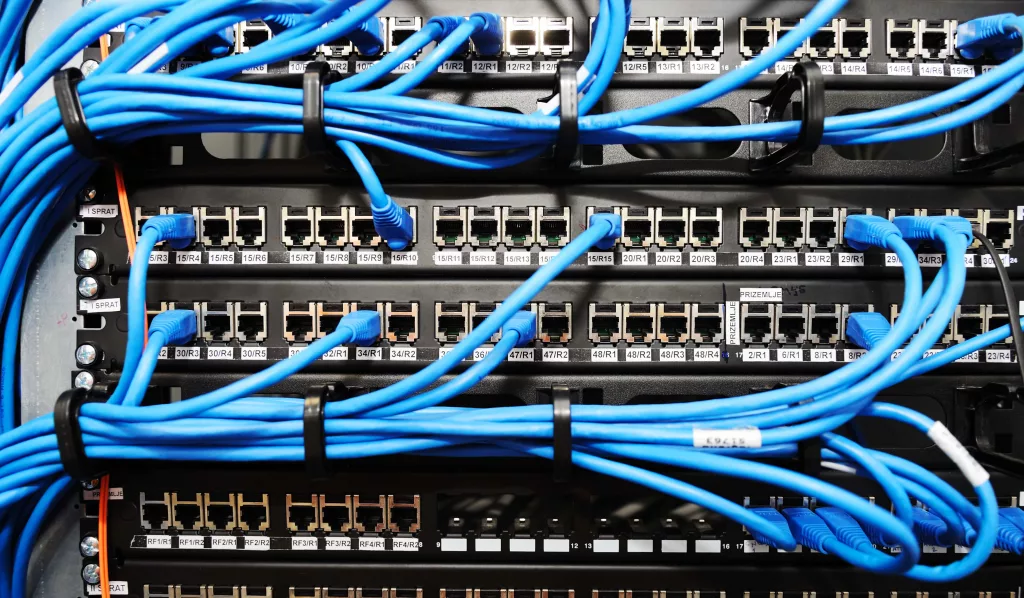As Americans have been confronted with ‘working from home’ via the internet during the pandemic, the strength and speed of their internet connections has become increasingly important. An internet connection is seeming as necessary as an electric, gas or water connection these days. A recent research study shows that about eleven percent of Michiganders still don’t have internet service. That’s slightly below the average across the country.
Here in the ‘Niles/Benton Harbor Metro Area’–which is what the Census Bureau calls Berrien County, about 12 percent don’t have internet. And a whopping 46 percent don’t have true high speed service, according to the survey.
Here’s a summary of the research report, supplied to MOTM by LatticeNewswire:
The COVID-19 pandemic induced a historic shift to remote work and schooling. During the first coronavirus surge last spring, the Bureau of Labor Statistics reported that over 35% of workers teleworked because of the pandemic. While that figure has declined, about 17% of workers reported teleworking due to the pandemic just last month. In addition, a Census Bureau report shows that an astonishing 93% of households with school-age children engaged in some form of distance learning during the pandemic—a change that puts those lacking internet access at a severe disadvantage. According to the latest Census Bureau data, 11% of American households do not have access to the internet, and 29% don’t have broadband.
Internet access has achieved near-widespread adoption over the past two decades. In 1997, just 18% of households had an internet subscription, but twenty years later, that figure had climbed to 78%. As residents increasingly rely on the internet for a broad range of services, broadband has also become the norm. According to Census Bureau data, in 2019, 71% of households had broadband, while just 0.2% had dial-up. That said, a cell phone and accompanying data plan is the only way that roughly one in 10 American households access the web.
Remote schooling and work typically require access to the internet, but internet access varies by socioeconomic status and race. Wealthier households with incomes over $75,000 are much more likely to have access to the internet than lower-income households making less than $20,000 per year—97% compared to just 69%. When considering race, Black households and American Indian and Alaskan Native households are the least likely to have internet access, at 83% and 78%, respectively.
In addition to the socioeconomic and demographic differences in household internet access, there are geographic divides. On a regional basis, the South tends to have lower rates of household internet access while the West has the highest rates. With just 79.8% of households with any internet access, Mississippi has the lowest rate among all 50 states. At the opposite end of the spectrum, Utah households are the most likely to have access, where 94.4% of households have internet connections.

To determine the least internet-connected states, Filterbuy analyzed data on internet access from the U.S. Census Bureau. States were ranked by the percentage of households who have any access to the internet—including broadband, satellite, dial-up, or cellular data. Researchers also calculated statistics on high-speed access, computer and smartphone ownership, cellular data plan usage, and household income.
The analysis found that in Michigan, only 88.8% of households have some sort of internet access, compared to 89.1% of the total U.S. population. Here is a summary of the data for Michigan:
- Households with any internet access: 88.8%
- Households with high-speed internet access: 68.2%
- Households with a computer or laptop: 75.1%
- Households with a smartphone: 84.8%
- Households whose only internet is a cellular data plan: 12.2%
- Median household income: $59,200
For reference, here are the statistics for the entire United States:
- Households with any internet access: 89.1%
- Households with high-speed internet access: 70.8%
- Households with a computer or laptop: 77.3%
- Households with a smartphone: 86.6%
- Households whose only internet is a cellular data plan: 11.0%
- Median household income: $65,000
For more information, a detailed methodology, and complete results, you can find the original report on Filterbuy’s website: https://filterbuy.com/resources/the-least-interconnected-cities/






